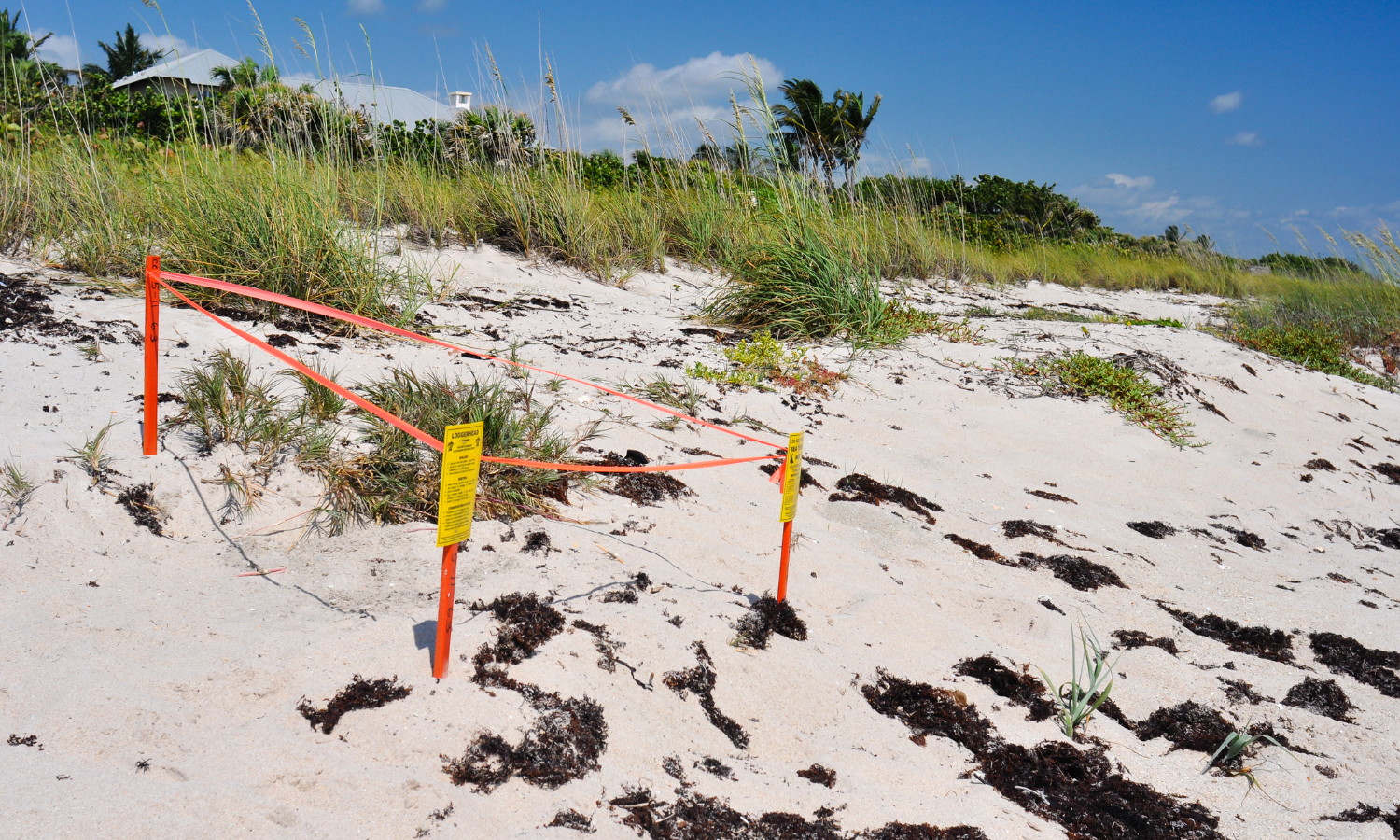Sea Turtle Nesting Season: What You Should Know
With Florida waters being home to five of the seven species of sea turtles around the world, Florida beaches are vital to the nesting and hatching processes of these endangered species. Female sea turtles will bury their eggs on the beach for them to incubate. After about two months, the young sea turtles will hatch and start crawling toward the ocean, guided by the natural light horizon over the water. Nesting season is typically from May to October, with August being one of the busiest months for both nesting and hatching activity. So if you see stakes and yellow tape markings on your next beach trip, it’s probably a sea turtle nest!
Baby leatherback sea turtle
3 Species You May Find Nesting in Florida
Loggerhead turtles, or Caretta caretta, are the most common nesting turtles on Florida beaches. They can be found nesting from the southern coasts of Florida all the way to South Carolina.
2. Green turtles, or Chelonia mydas, are the second most common nesting turtle in Florida. About 99% of green turtles will lay their eggs on the Atlantic coast due to the high concentration of green turtles in that region.
3. Leatherback turtles, or Dermochelys coriacea, are the only remaining species of the soft-shelled turtle family known as Dermochelydae. They are not commonly found nesting on Florida beaches, but they are the most widely distributed reptile in the world.
Beach furniture and other items can create obstacles for turtles. Please remember to pack up all your beach supplies before you leave!
Steps You can Take to Help Sea Turtles
Since sea turtles are protected by the Endangered Species Act, there are steps we can take to help baby sea turtles hatch and survive. Here is a list of good practices to protect sea turtles this summer.
Keep a distance from marked nesting sites on beaches
Fill in holes you come across, and don’t leave furniture (beach chairs, umbrellas, etc) on the beach
Avoid using bright lights after dark when on the beach or near the water
Call the FWC Wildlife Alert Number to report injured, dead, or harassed sea turtles (1-888-404-FWCC)
Pick up any trash you find on the beach
If you’re looking to get involved and make a difference for our beaches and the sea turtles nesting on them, join us for our International Coastal Cleanup on September 20!
References:
Duran, A., et al. (2024, October 28). A Guide to Nesting Sea Turtles in Florida. Ask IFAS. Retrieved from https://edis.ifas.ufl.edu/publication/FA235
Florida Museum. (n.d.). Sea Turtles. Retrieved from https://www.floridamuseum.ufl.edu/savingwildlife/sea-turtles/
MOTE Marine Laboratory & Aquarium. Protect Marine Life. Retrieved from https://mote.org/research/environmental-updates/#protectwildlifebeachgoers
St. Pete Beach. (n.d.). Sea Turtles. Retrieved from https://www.stpetebeach.org/617/Sea-Turtles



